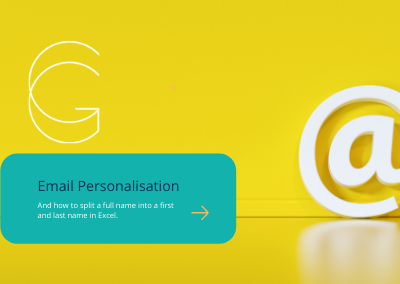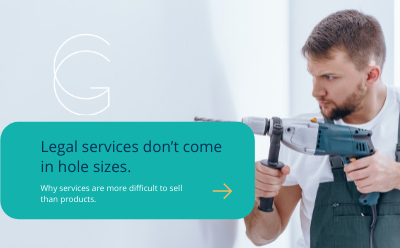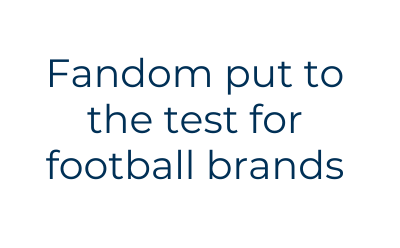
by Carmen Gray | Jun 16, 2021
First of all, a really simple hack! Splitting your excel full name cell into two
Have you ever wanted to send an email newsletter to a named person but haven’t because your excel database contains both first and last name in one cell. It’s happened to me oodles of times in the past, but finally, I’ve found the solution. And its so simple!
Here’s what you need to do to split your ‘full name’ cell into separate first and last name cells.
Open your excel document. You’ll note in the image below that I have both first and last name in column A.
Now all you need to do is to copy the two formulae you can see in cells B1 and C1 below into the cells you want the data to appear. This example splits out the contents of cell A2 (Atticus Finch) so I typed the formula into B2 and C2 (although it’s showing in row 1 here for clarity).
Note: When entering each of the two formulae, you need to make sure that the cell number you refer to, relates to your first ‘full name’ cell number. In my example, this is A2.
Then click on the corner of each cell with the formula and drag down the column to copy. Then sit back marvel at what’s just happened as I did.
The formula in its unique form is below. To use it, you just need to change the word cell to the alphanumerical reference of the cell you are splitting.
For the first name: =LEFT(cell, SEARCH(” “, cell) – 1)
For the last name: =RIGHT(cell, LEN(cell) – SEARCH(” “, cell))
Email Personalisation
Campaign Monitor has found that emails with a personalised subject line have 26% higher open rates. Getting recipients to open your emails is more than half of the battle so a 26% increase chance of making this happen is significant. However, email personalisation isn’t simply about adding a client, or a potential client’s name. Getting your clients to interact with you based on what they see when they click into your email is your next priority.
Personalisation throughout the email should leave the recipient believing that every element of the email they’ve received from you, from the subject to the images and content within, has all been tailor-made specifically for them. Get this right and your email open rates and revenue rates will increase because we’re talking to our clients about their specific problems, issues or interest areas.
Tailored content flows may be based on previous purchases, the content they’ve shown interest in, or at what stage they’re are on their client journey with you. If a client has recently gone through a divorce, they may be grateful to be reminded to update their Will, for example.
Asking for information from your contacts will also help avoid any faux pas and allow you to keep your personalisation on track and your goodwill intact. Just recently, I’ve received several emails from gift and card companies asking me if I’d prefer not to be reminded about father’s day. I don’t have an issue with it, but if my father had passed away, I may well feed this information back and this is useful for managing the client relationship in the future.
Email marketing is still one of the primary marketing tools that we have in our marketing toolkit. We see it being used badly all too often but when it is thought through and planned well, it can be a gamechanger. There is much to consider, but here are a few email personalisation dos and don’ts that you may find food for thought.
Email personalisation DOs
- collect data that is useful
- use the subscriber’s first name appropriately
- personalise your subject lines
- add personalisation to your email copy
- implement segmentation based on your useful data
- use email marketing automation for tailored content flows
Email personalisation DONTs
- ignore the data you have already collected
- send mass-emails with no end game in mind
- assume all your subscribers want the same information from you
- ignore what your email marketing measures tell you about your email performance

by Carmen Gray | Jun 8, 2021
Theodore Levitt famously said
People don’t want quarter-inch drill bits. They want quarter-inch holes.
He was right of course. Few people would claim to actually WANT to own a drill and series of drill bits. But they also know that by buying a drill with a quarter-inch drill bit, they’re guaranteed to get the outcome they seek – a hole.
The same is true when people buy legal services. Clients will have a desired outcome in their minds (a divorce, a financial settlement, resolving an employee dispute), however, the path to achieving that isn’t quite as straightforward. There are no quarter-inch drill bits in the legal sector!
If we think about it, a product will always have a technical and physical spec. A service? Not so much. So whilst we may be selling a desired outcome the route and the cost of achieving that outcome is often very different for each client.
Why is marketing services so challenging?
Services aren’t a tangible thing – they take longer to explain
There are few commonalities in services. No generally accepted size 12. No colour palate. No easily recognisable standard and luxury models.
Service products can be complex. They can be packaged to a degree but this isn’t always easy to do when the matters involve opposing parties and other as-yet-unknowns. So we can’t always be succinct and get straight to the point so easily.
Services bring more risk than products – they have a longer-term impact
It’s true. In the legal sphere we are dealing with someone’s family, their career, their home or the future of their business. A prospective client isn’t buying a rug that they’ll throw away when they redecorate; they’re buying something very personal to them. And in business situations, they may feel that their reputation is at stake.
For the client, there will be a perceived personal risk if they do not achieve the outcome they were looking for.
There is no ‘buy now’ item – decision making is a long process.
Unlike products, a service cannot be separated from the service provider, therefore everyone is buying something unique because firms are providing a different service experience with every fee earner they have.
The client isn’t buying something they can see, feel, taste, smell, hear or touch but an intangible process. The process, the fee earner and the experience needs to suit them. As a firm, we need to build their confidence in us so that they know we are going to deliver and that a given solicitor is the right one for them.
So what do we do?
We learn how to market our firm from the perspective of our client. We stand in their shoes.
When marketing legal services, we need to be clear on the outcome or matters that we can represent. And we need to recognise that one size will rarely fit all. We need to communicate specifically, but efficiently. Clients will check the credentials of our firm and the people that may represent them. They will probably obtain more than one £ estimate and look for referrals and reassurance. To them, the stakes are high.
Aside from marketing a result, we need to take the time to build trust and relationships. It’s essential for long term survival … and is something a quarter-inch drill bit will never need to achieve.
Carmen Gray is a Chartered Marketer and Member of the Chartered Institute of Marketing and can be contacted via 07989 202009 or chat@camengray.co.uk

by Carmen Gray | Apr 21, 2021
For football fans of the UK’s ‘big six’, it’s been an interesting few days. For me as a lifelong Tottenham Hotspur supporter, I’ve been shocked, horrified, saddened and embarrassed by the actions of my* team; a team that I’ve supported for over 40 years. They are truly testing my fandom.
Whether we choose to accept it or not, fandom is the ultimate in loyalty and love. Whether it’s for a football club, a pop star, a fashion house or even a service provider, where fandom exists, the brand is at its ultimate power. Fandom is unwavering, unquestioning, immovable and lasts forever.
When a brand speaks, it offers any of a number of rewards all of which will offer some kind of economical, psychological and functional benefit. That’s to say that a brand might save you time, money, process pain, boost your ego, or help you live an environmentally friendly life. However, a firmly established brand will offer a further benefit … an emotional one. When we are emotionally attached to a brand, such as we are with our favourite sporting team, the heart rules the head, we cannot be swayed, we do not waiver. We support and are loyal no matter what happens. Think about it. Why do you support your football team? Because they play in the town where you live? Or were born? The chances are that it’s irrational.
Just imagine the power of that loyalty for your own firm’s brand. Apple may release products that are not 100% perfect – it doesn’t matter, fans come to expect this and Apple is forgiven because fans love the product, the packaging, the experience, the brand. Where the heart rules, fandom affords brands a level of loyalty, and faux pas, that simply will not be tolerated otherwise.
Achieving this level of loyalty should be the goal of every brand, regardless of whether you’re a sports team or a professional services organisation. Win the heart, and your clients (or fans) are clients for life.
Today, as Tottenham issue a run of the mill statement and are one of the last teams to back out of the European Super League, I wonder if my support for the team will ever falter. As someone who at the age of 9 decided to support them because she simply liked the name, and who now sits here typing this in her Tottenham Hotspur hoodie, I think it is unlikely.
*note the absolute sense of ownership.

by Carmen Gray | Feb 22, 2021
I get asked this question a lot with regards to awareness raising. And I mean a lot.
The truth is that it depends on your target audience and your objectives. I’ve gone through periods when it’s been quite refreshing to dust off traditional promotion and communication methods such as press advertising, direct mail, inserts, radio and printed banners. It’s can be great fun – and very fruitful.
I say now what I’ve always said – when planning a marketing communications campaign keep the customer in the front of your mind. Ask yourself what’s appropriate to your objective, and appropriate to the customer? What are they likely to respond to and where will they do this?
Combine the answer with an appropriate message through powerful imagery and great copy – and you’re onto a winner. And remember that digital and traditional methods don’t have to be exclusive. If you’re in doubt, why not talk to me about my marketing communications workshop?

by Carmen Gray | Feb 22, 2021
Many firms pay little or no attention to the macro environment believing that there is no point because the firm can’t do anything about them. But the truth is, they are probably one of the most important elements of your business environment that you should pay attention to. This blog discusses why.
Any marketing plan should begin with Environmental Analysis; that is to examine macro, micro and internal elements that may have an impact on the firm. Micro factors ( aka competitors, customers and suppliers) all seem pretty logical things to pay attention to – they care close to the firm and we can interact with them. The same goes for our internal environment (skills, competencies, money etc). But why bother about macro factors?
Macro factors are things at large and often quite far removed from our business. They might be for example:
Political – new government or international relations; and dare I say the Brexit word.
Legal – employment, health and safety, marketing and any other legislation
Economic – taxation, employment, interest rates and so on
Social – demographic changes, Corporate Responsibility
Technological – yes, the internet, but also processes and transport.
Most businesses will ignore macro factors on the basis that they are quite far removed and have little or no influence over them. But here’s the thing. There WILL be macro changes and these changes will present opportunities or threats to your firm. Once certainty is that changes are going to happen – and there is nothing that you can do to stop them. So you have to choose. Are you going to ignore them? Or are you going to have a response or course of action ready to maximise opportunities and mitigate threats?
Here’s a very personal example. When VAT increased from 17.5% to 20% in 2011, I knew it was coming. But I did nothing about it – and when the VAT increased I passed the cost onto my clients, not all of whom were VAT registered. What happened? Well, I lost one of my clients because she could no longer afford me. That slight increase tipped me over her price bracket.
There was nothing I could do about the VAT charge, it was a given. But I did have choices. These were:
1. Ignore it
2. Reduce my day rate so that her outlay wasn’t affected
3. Work fewer hours on her account to maintain an affordable spend
4. Move her onto an alternative service
I chose the first option. And there was my second mistake. My first was not taking this Economical factor into account seriously enough in the first place.
A marketing plan that doesn’t begin with external and analysis isn’t a true and realistic plan. How can your firm possibly set realistic objectives if you don’t know your starting position and where the challenges and opportunities for the coming months and years lie?
For help assessing your business environment including macro factors, customers, competitors and the environment inside of your own practice, call me on 07989 202009 and we’ll talk about my Marketing Planning workshop.







Recent Comments